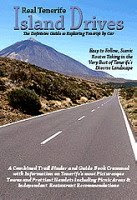It was reassuring to see that nothing had changed, but what’s more it also reminded us of the perceptions we had of Tenerife, particularly the south of Tenerife even after we had moved to the island.
One of our first writing commissions on Tenerife was a location report about the town of San Miguel de Abona in the hills above the south coast. That commission completely changed our opinion of the south of the island.
We discovered a charming little town which dated back to shortly after the conquest, where little English was spoken and the nightlife centred around the ‘Rincon del Ron’ (rum corner) in a converted old bodega and at the Canarian wresting ring. It also had some great little restaurants tucked away in its vertiginous streets. It wasn’t what we expected and I have to admit that it was a compete surprise to find a town that went so completely against my image of the south of Tenerife. It wasn’t an isolated case.As we got to know the south of the island better we discovered more friendly little towns full of character with picturesque squares and beautiful baroque churches whose grandness seemed out of proportion with the size of the towns they were in. On terraces surrounding the towns, people pottered about in plots growing potatoes and tending vines. They were about as far away from the popular image of Tenerife as you could get and yet were only a short drive from the biggest of the southern resorts.
 Like I said at the start, not a lot had changed since we first wrote the route, or since we included the most interesting of the towns in more detail for the southern chapters of ‘Going Native in Tenerife’. Unsurprising really, probably not a lot has changed in centuries.
Like I said at the start, not a lot had changed since we first wrote the route, or since we included the most interesting of the towns in more detail for the southern chapters of ‘Going Native in Tenerife’. Unsurprising really, probably not a lot has changed in centuries.Playa de las Américas and Costa Adeje may be purpose built tourist pleasure domes for sure, but much of the south of Tenerife is distinctly Canarian in character and as culturally strong as it always has been.




No comments:
Post a Comment